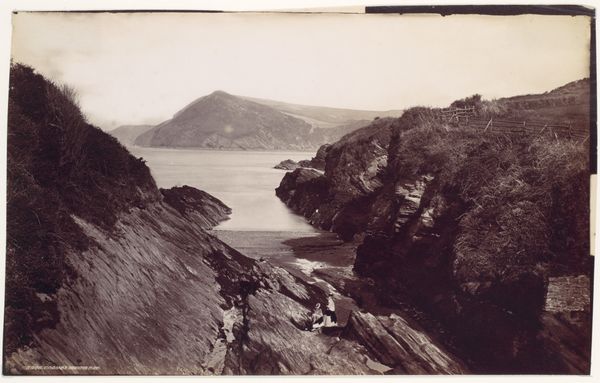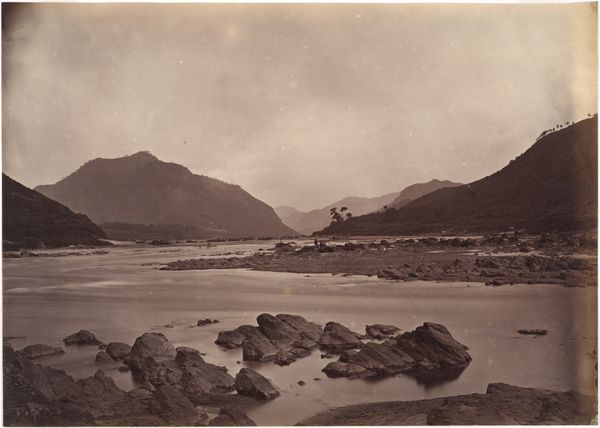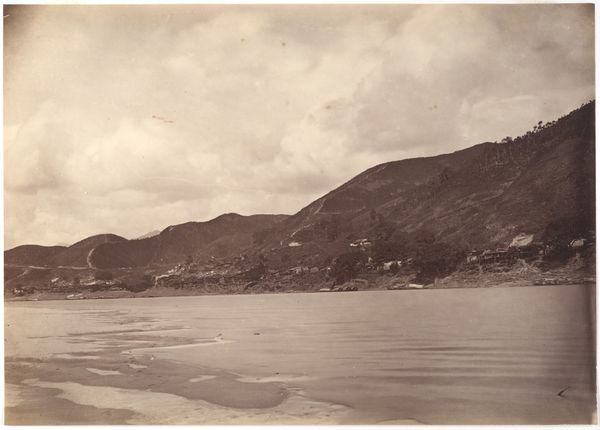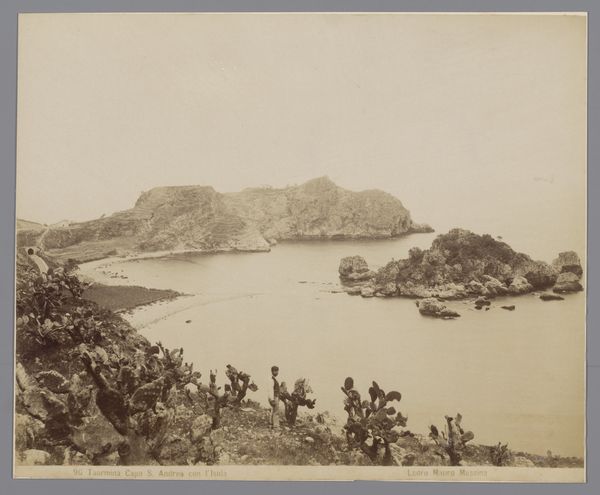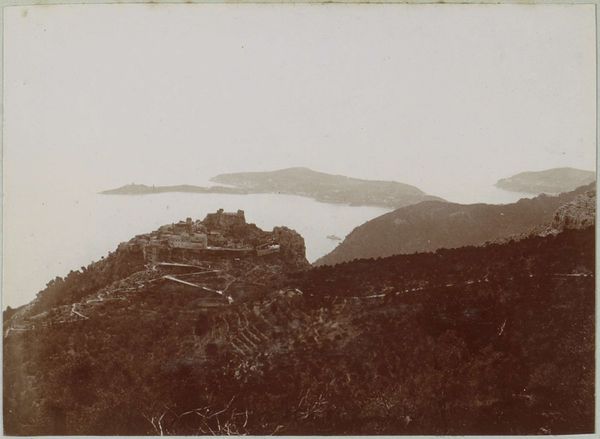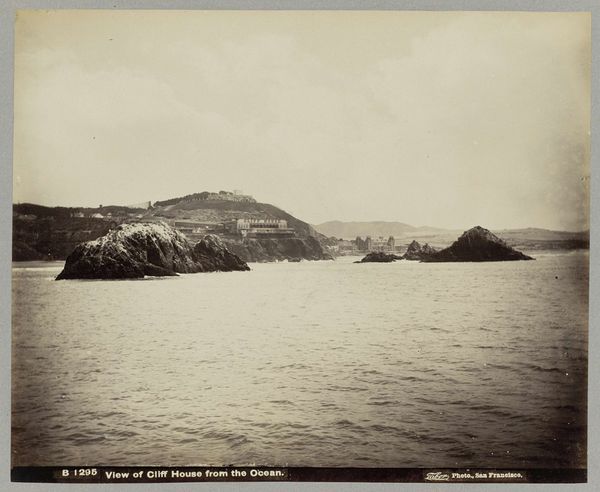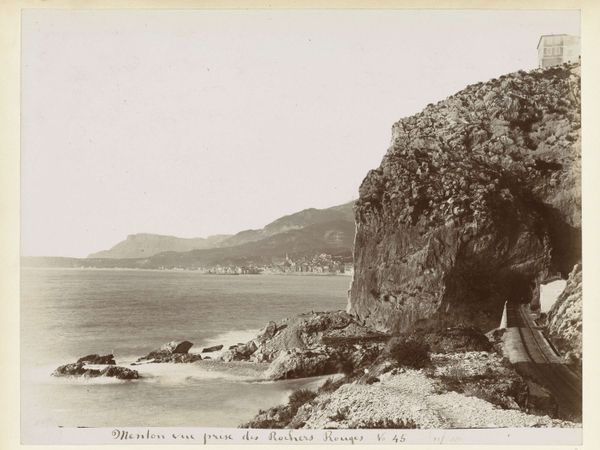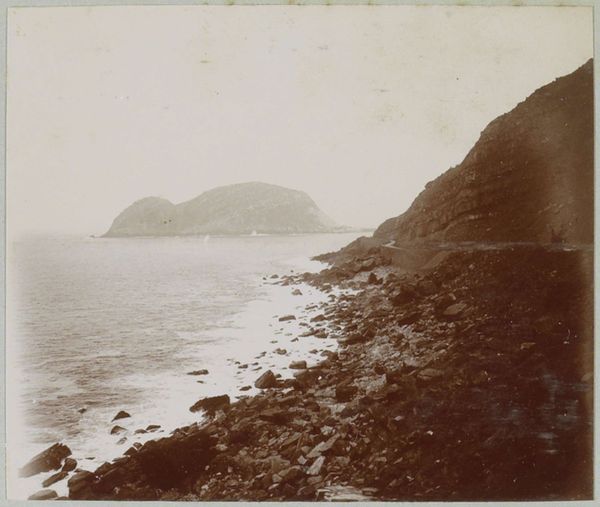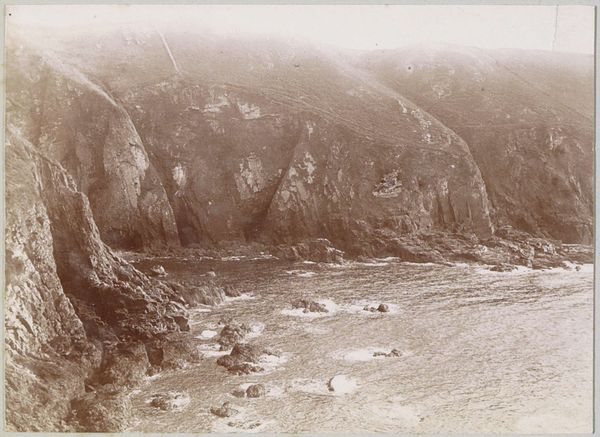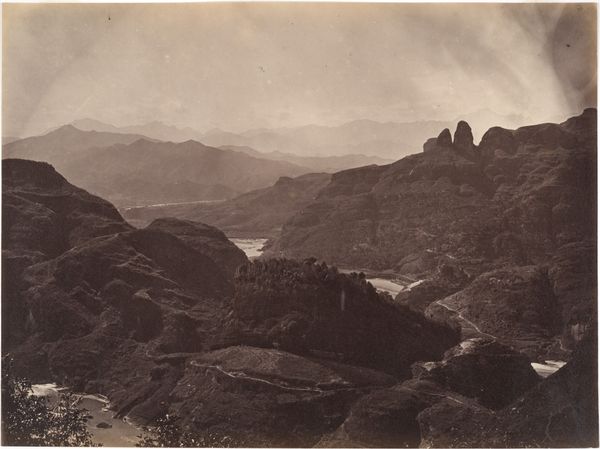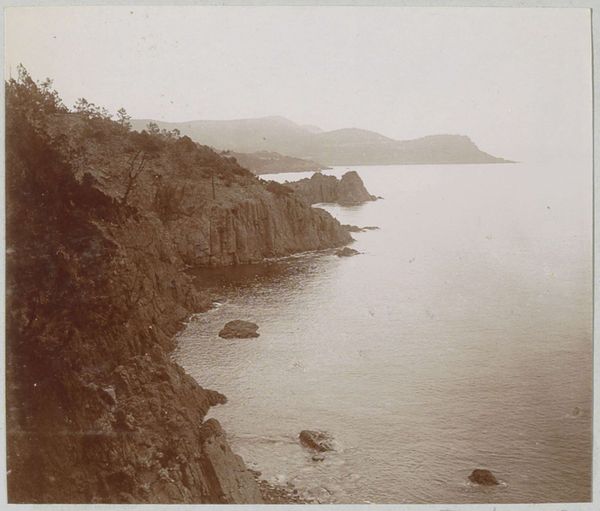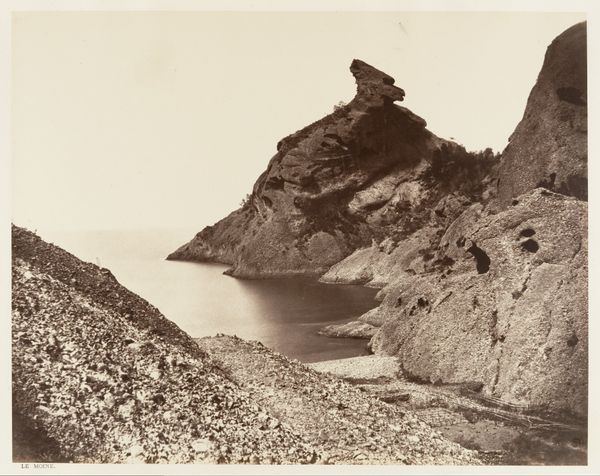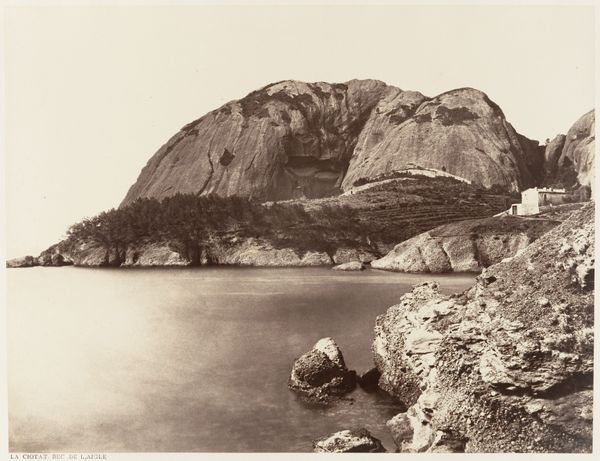
Gezicht op Hillsborough en Lantern Hill nabij Ilfracombe, North Devon 1851 - 1880
0:00
0:00
jamesvalentine
Rijksmuseum
Dimensions: height 185 mm, width 289 mm
Copyright: Rijks Museum: Open Domain
Curator: Standing before us, we have a gelatin-silver print, dating sometime between 1851 and 1880, attributed to James Valentine. It’s entitled "Gezicht op Hillsborough en Lantern Hill nabij Ilfracombe, North Devon." Editor: Immediately, I'm struck by how much the composition conveys a sense of stoic endurance. The jagged, dark rocks contrast with the softer, subdued light in the sky and on the water. It feels very isolated, almost defiant. Curator: Yes, there’s a powerful duality there. The photograph comes to us from an era deeply entangled with notions of empire and industry, and even landscape photography was a product of a colonialist project aimed at mapping, documenting, and, in essence, claiming territory. How might we read this scene within that complex history? Editor: The lantern on the hill functions almost like a watchful eye, doesn’t it? Lighthouses and beacons are classic symbols of guidance and safety, but also control. Think about who that light is meant to protect, and who it excludes. This coastal region of North Devon was essential to maritime navigation. So it can be understood as a projection of British authority onto the sea. Curator: Precisely. This intersects interestingly with its designation as "Romanticism." Romanticism valorized the sublimity of nature and individual experience, yet that appreciation often coincided with economic exploitation and social inequalities. Where does the sublime end, and the justification of power begin? Editor: It also evokes cultural memory. Long before its role in naval strategy, such elevated sites were venerated as sacred grounds in pre-Christian Celtic societies. The image thus silently gestures toward layered pasts beneath a modern facade. And one sees a lone house nestled on a cliff – does it represent resilience, or merely colonial expansion? Curator: It makes us question the perceived ‘objectivity’ of early photography, doesn't it? This is more than just a pretty landscape. Editor: Agreed. By deciphering symbols and attending to the unspoken social context, we deepen the artistic discourse to appreciate it to the fullest.
Comments
No comments
Be the first to comment and join the conversation on the ultimate creative platform.
